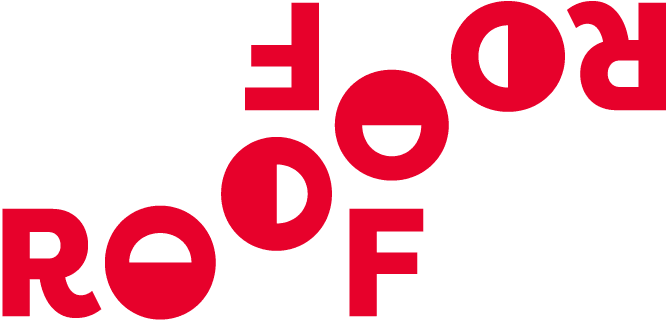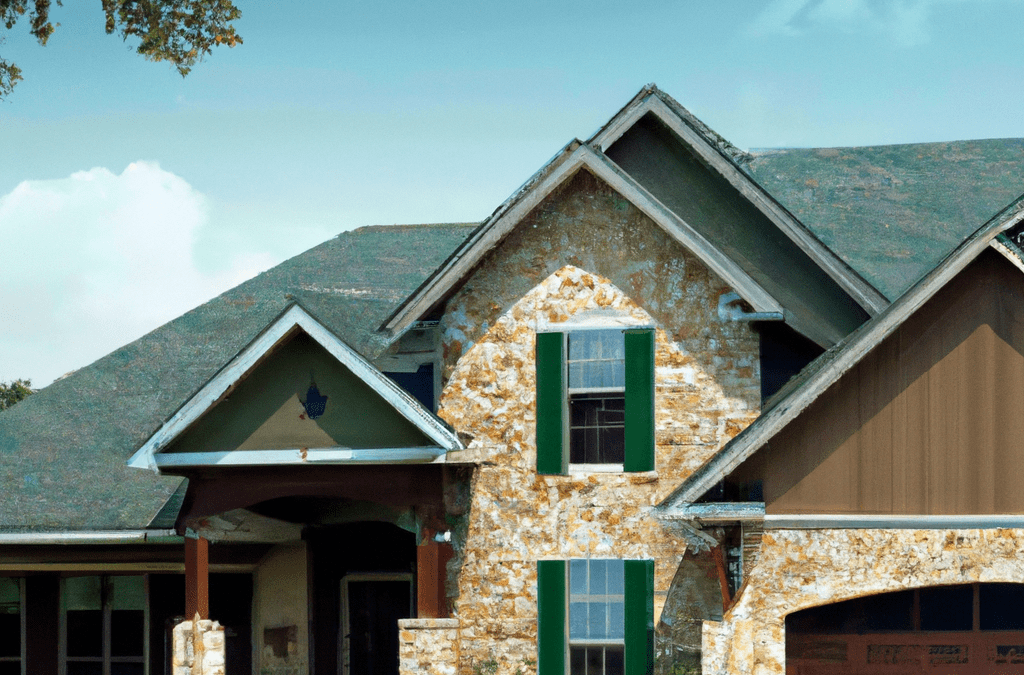
May 1, 2024 | Marketing, Roofing, Sales
Landing commercial roofing contracts can be a tough task, but with the right strategies, you can enhance your chances of success. Below, we’ve laid out some valuable tips to help you secure more contracts and grow your roofing business.
Know Your Stuff
First and foremost, you need to have deep knowledge about commercial roofing. Understand the different materials, techniques, and the latest trends. Being a pro in your field will make clients trust you more. They’ll see that you know what you’re talking about, which is a big deal when choosing a contractor.
Build a Strong Reputation
Having a good reputation is key. If people have heard good things about your work, they’re more likely to hire you. You can build a strong reputation by always doing a great job and encouraging happy clients to leave positive reviews online or refer you to others. Word of mouth is powerful!
Make Connections
Don’t wait for customers to come to you. Get out there and network! Attend industry events, join local business groups, and get active on social media platforms where businesses might look for roofing contractors. The more people know about your service, the higher your chances of landing contracts.
Offer Competitive Pricing
Be smart about your pricing. You don’t want to be too pricey, but you also need to make a profit. Offering competitive pricing can make you more attractive to potential clients. Consider providing free estimates or consultations as a way to get your foot in the door.
Provide Excellent Customer Service
Good customer service goes a long way. Respond quickly to inquiries, be friendly and helpful, and always follow up with your clients. If you make the experience pleasant and easy for them, they’re more likely to choose you for their roofing needs.
Highlight Your Unique Selling Points
What makes your business stand out? Maybe you specialize in sustainable roofing solutions, or perhaps you offer an unbeatable warranty. Whatever your unique selling points are, make sure they’re front and center in your marketing materials and sales pitches.
Use High-Quality Materials
Never compromise on the quality of materials. High-quality materials not only last longer but also provide better protection and a more professional finish. Clients will notice the difference, and it could be the deciding factor in choosing your service.
Keep Learning
The commercial roofing industry is always evolving, so it’s important to keep learning and stay up to date. This might mean attending workshops or taking online courses. The more you know, the better service you can offer, and the more appealing you’ll be to potential clients.
Securing commercial roofing contracts requires effort, skill, and a bit of strategy. By following the tips above, you’ll be well on your way to winning more contracts and expanding your business. Remember, consistency is key, so don’t get discouraged if you don’t see results overnight. Keep at it, and your hard work will pay off.
Apr 18, 2024 | Marketing, Sales, Web Design
In the contemporary marketplace, Facebook has evolved into a powerful tool for businesses across all industries to increase their visibility and attract new customers. For roofing companies, Facebook ads offer a targeted approach to advertising that can significantly impact your business’s growth and clientele expansion. This article explores why you should consider Facebook ads for your roofing business and provides practical tips on how to create effective campaigns.
Why Facebook Ads?
Facebook boasts over 2 billion active users, providing a vast audience for your roofing business. The platform offers advanced targeting options that allow you to reach potential customers based on specific demographics, interests, and behaviors. This means your ads can be shown to homeowners in your local area who may be in need of roofing services. Additionally, Facebook’s cost-effective pricing means you can achieve substantial visibility without exhausting your marketing budget.
Setting Goals for Your Campaign
Before launching a Facebook ad campaign, it’s crucial to set clear, measurable goals. Whether you want to increase brand awareness, generate leads, or drive traffic to your website, having specific objectives will help you design more effective ads and measure the success of your campaign. For roofing businesses, common goals include getting quote requests, booking consultations, or promoting seasonal roof inspections and maintenance services.
Understanding Facebook Ad Types
Facebook offers various types of ads you can utilize to promote your roofing business:
- Image Ads: These simple ads are a great way to start with Facebook advertising. A striking image combined with a compelling caption can effectively attract the attention of potential customers.
- Video Ads: Video ads can show your team in action, providing a behind-the-scenes look at a roofing job or demonstrating the quality and safety of your work. This type of content is highly engaging and can increase the trustworthiness of your brand.
- Carousel Ads: Featuring multiple images or videos, carousel ads allow you to showcase different services you offer, such as roof repair, installation, or maintenance.
- Lead Ads: These ads are designed specifically for lead generation. They include a built-in form that makes it easy for Facebook users to sign up for more information, effectively generating potential leads directly from the ad.
Targeting the Right Audience
Facebook’s targeting capabilities are a key component in the success of your ad campaign. You can target users by location, age, gender, interests, and behaviors, among other options. For a roofing company, you might want to target homeowners within a specific age range or properties in areas that recently experienced severe weather conditions. Additionally, retargeting options allow you to reach people who have previously interacted with your brand, reminding them of your services and potentially prompting them to get in touch.
Crafting Compelling Ad Content
The effectiveness of your Facebook ads largely depends on the quality of the content. Ensuring your ads resonate with the target audience is paramount. High-quality images of your work, testimonials from satisfied customers, and clear, direct calls to action (CTA) like Contact us for a free estimate or Learn more can improve the performance of your ads. Also, maintain authenticity and professionalism in every ad, as these elements reflective of your business’s values and professionalism.
Monitoring and Adjusting Your Campaigns
Once your ads are live, it’s important to continuously monitor their performance and make necessary adjustments. Use Facebook’s Ads Manager to track metrics such as impressions, click-through rates, and conversions. Analyzing this data allows you to see what’s working and what isn’t, helping you to optimize your campaigns for better results.
Conclusion
Facebook ads can be an incredibly effective tool for roofing businesses looking to grow their customer base and increase their sales. By setting clear goals, understanding the ad types available, targeting the right audience, creating compelling content, and continually monitoring performance, you can harness the full potential of Facebook advertising to boost your business’s success.
With the right strategy, roofing companies can see significant returns from their Facebook advertising efforts, making it a valuable component of your digital marketing efforts. Whether you’re just starting out or looking to enhance your existing campaigns, these strategies can provide a framework for effective advertising on Facebook.

Apr 10, 2024 | Marketing
Hashtags have transformed the landscape of digital marketing, offering a unique way for businesses to increase their online visibility and engage with a broader audience. For roofing companies looking to make an impact on social media, mastering the art of hashtag use is essential. This complete guide to hashtags for roofing will help you amplify your content, reach your target customers, and grow your business on platforms such as Instagram, Twitter, and LinkedIn.
Understanding Hashtags
Before diving into how to use hashtags for your roofing business, it’s important to understand what hashtags are and how they function. A hashtag is a word or phrase preceded by a hash sign (#) used on social media to identify messages on a specific topic. They organize content, making it easier for users to find posts related to their interests. When clicked, a hashtag will reveal all public posts tagged with that same hashtag, creating a stream of thematic content.
Why Use Hashtags for Roofing?
Hashtags are particularly beneficial for roofing companies for several reasons:
- Visibility: Using popular and relevant hashtags can help your posts be seen by a wider audicne beyond just your followers.
- Networking: They can connect you with other professionals in the roofing industry, facilitating collaboration and knowledge exchange.
- Marketing: Hashtags can greatly enhance your marketing campaigns by increasing the reach of your promotions, tips, and portfolio highlights.
- Branding: Consistent use of specific hashtags can reinforce your brand identity and make your content more recognizable.
- Engagement: They can encourage user participation in contests, Q&A sessions, and customer feedback opportunities.
Types of Hashtags for Roofing
There are several types of hashtags that can be effective for roofing companies:
- Industry Hashtags: These relate directly to the roofing industry and can help reach professionals and enthusiasts. Examples include #Roofing, #Roofers, #RoofRepair, and #RoofingContractor.
- Location-Based Hashtags: Adding your city or region can help localize your audience. For example, #DallasRoofing or #RoofingTexas can target potential customers in specific areas.
- Service Hashtags: Highlight the services you offer, such as #RoofInstallation, #RoofMaintenance, or #EmergencyRoofRepair.
- Niche Hashtags: Specify your niche within the roofing industry, like #GreenRoofing, #MetalRoofs, or #CommercialRoofing, to attract a particular segment of customers.
- Branded Hashtags: Create and use unique hashtags for your roofing company to build brand identity and foster user-generated content. This could be as simple as your company name, like #SmithRoofing.
- Event and Campaign Hashtags: For special events, promotions, or campaigns, create a specific hashtag to track engagement and participation. Examples could include #RoofSafetyWeek or #SmithRoofing25Years.
Best Practices for Using Hashtags
Finding the Right Hashtags
Begin by researching which hashtags are most popular and relevant to your business. Look at what your competitors are using, check out industry influencers, and use hashtag research tools. Balance popular hashtags with more niche ones to reach both broad and specific audiences.
How Many to Use
The number of hashtags you should use can vary by platform. On Instagram, you can use up to 30, but 11 to 20 is often seen as optimal to not appear spammy. Twitter favors brevity, with 1 to 3 hashtags per tweet being effective. LinkedIn users typically use fewer hashtags, and a focus on quality over quantity, with 1 to 5 being recommended.
Creating a Hashtag Strategy
Develop a consistent strategy for your hashtags. Mix and match different types of hashtags for each post to maximize your reach and effectiveness. Create a branded hashtag for your company and encourage your customers to use it in their posts. Keep track of which hashtags perform the best and adjust your strategy accordingly.
Engaging with Your Hashtags
Hashtags aren’t just for organizing content; they’re also about creating a community. Regularly engage with posts that use your hashtags or are relevant to your industry. This can manifest as likes, comments, or shares, helping to build relationships and attract attention to your company’s social media profiles.
Conclusion
Effectively utilizing hashtags in your social media strategy can significantly improve your roofing company’s online visibility, customer engagement, and brand recognition. By understanding the different types of hashtags and implementing best practices in their use, you can connect with a broader audience, showcase your expertise, and ultimately, drive more business. Stay adaptable and continually refine your hashtag strategy to keep pace with trends and maximize your social media impact.

Jan 23, 2024 | Marketing, Sales
Introduction to Achieving $100K in Roofing Sales
Achieving $100,000 in roofing sales is a significant milestone for sales professionals in the roofing industry. This target not only reflects a substantial volume of business but also showcases the salesperson’s expertise, reliability, and dedication to their craft. Whether you are new to roofing sales or looking to increase your sales figures, the following tips will guide you through strategies that are proven to enhance your sales performance and help you reach this impressive goal.
Understanding the Roofing Market
Before diving into specific sales tips, it’s crucial to have a firm understanding of the roofing market. This includes knowledge about different roofing materials, understanding the local climate’s impact on roofing, and staying updated with the latest industry trends and technology advancements. Familiarizing yourself with these aspects will help you to provide valuable information to customers and suggest the most suitable solutions for their needs.
Tip 1: Educate Yourself Continuously
Invest time in learning about new products, installation techniques, and sustainability practices in roofing. Attend workshops, seminars, and webinars that can enhance your product knowledge and technical skills. Being well-informed not only boosts your credibility but also empowers you to confidently answer client queries and handle objections effectively.
Tip 2: Understand Local Building Codes
Different regions have specific building codes relating to roofing. Understanding these regulations can help you avoid proposing non-compliant solutions, thus saving time and avoiding legal issues.
Building Strong Customer Relationships
In the roofing sales industry, success heavily relies on trust and relationships. A durable roof is a significant investment for most homeowners, and they need to trust that you are offering the best solution.
Tip 3: Foster Trust Through Transparency
Always be transparent about pricing, the materials used, the duration of work, and any warranties offered. Dishonesty can lead to mistrust and damage your reputation and potential referrals.
Tip 4: Follow-Up Consistently
Regular follow-ups keep you top-of-mind and demonstrate your commitment to customer service. Make a schedule for checking in on past clients, updating them on new solutions, or simply ensuring they are satisfied with their installation.
Leveraging Technology
Incorporating technology can significantly streamline operations and improve your sales numbers.
Tip 5: Use CRM Software
Customer Relationship Management (CRM) software helps manage interactions with current and potential customers. It stores useful data that can help you understand client needs and preferences, leading to more personalized and effective sales strategies.
Tip 6: Embrace Digital Marketing
Utilize digital platforms like social media, your company website, and online ad spaces to reach a broader audience. An interactive, informative website with high-quality content about roofing solutions can attract more leads. Search engine optimization (SEO) is particularly effective in increasing visibility in local search results.
Mastering the Art of the Sale
Your approach to selling plays a crucial role in reaching the $100K mark.
Tip 7: Improve Your Consultative Selling Skills
Focus on understanding customer needs and providing tailored solutions rather than pushing sales. Ask the right questions, listen actively, and build a proposal that addresses the client’s specific problems and objectives.
Tip 8: Upselling and Cross-Selling
When appropriate, suggest upgrades or additional products that could enhance the client’s roofing solution. For instance, offering solar tiles might be an attractive proposition for environmentally conscious customers.
Tip 9: Offer Flexible Financing Options
Roofing can be expensive, and not all homeowners can afford to pay upfront. Providing flexible financing options can make roofing projects more accessible to a wider audience, thus increasing your sales potential.
Conclusion
Reaching $100,000 in roofing sales is an achievable goal with the right approach and strategies. By continuously educating yourself, building strong, trust-based customer relationships, leveraging the latest technologies, and perfecting your sales techniques, you can significantly increase your chances of achieving and even surpassing this target. Remember, every roofing project is an opportunity to build a lasting relationship that can lead to future business and referrals.

Jan 15, 2024 | Marketing, Web Design
Introduction to Monetizing Your Website
Creating a website is a powerful first step towards establishing a digital presence, but the next pivotal move for any website owner is effectively monetizing it. Monetizing your website not only helps in generating income but also aids in scaling your site, enhancing content quality, and improving user experience. This article explores various strategies that can help turn your website into a profitable venture.
1. Displaying Advertisements
Google AdSense and Other Ad Networks
One of the most common methods to monetize a website is through displaying ads. Google AdSense is widely recognized for its ability to provide relevant ads based on your audience’s interests. Signing up is free and straightforward, making it an excellent starting point for beginners. Other ad networks, such as Media.net and PropellerAds, can also serve as viable alternatives depending on your traffic and niche.
Direct Banner Advertisements
For those who prefer more control over the ads shown on their website, direct banner advertisements can be a great choice. This involves directly negotiating with advertisers without an intermediary network, which can lead to better rates and relevant placements.
2. Affiliate Marketing
Affiliate marketing involves promoting products or services from other businesses and earning a commission on the sales or leads generated. This method is highly effective, especially if you have a niche audience that trusts your recommendations. Companies like Amazon Associates and ClickBank offer extensive affiliate programs that you can join to find products aligning with your content.
3. Selling Digital Products or Services
Digital Products
If you have expertise in a particular area, selling digital products such as eBooks, courses, software, or music, can be extraordinarily profitable. Digital products don’t require physical inventory, making them easier to manage and scalable.
Services
Offering services through your website, such as consulting, writing, or design, can also be a lucrative way to monetize. This strategy works well when paired with an active blog or a portfolio section that showcases your expertise and achievements.
4. Sponsored Content
Sponsored content involves collaborating with companies to create content that subtly promotes their products or services. This approach is typically more engaging and less intrusive than traditional advertisements. Transparency is crucial, so ensuring your audience is aware of sponsored content is vital to maintaining trust.
5. Membership Programs
Setting up a membership program can provide a continuous revenue stream. Members pay a recurring fee to access exclusive content, specialized communities, or additional features. This model fosters a closer connection between you and your most dedicated followers.
6. Donations and Crowdfunding
If your website operates on providing free information, like tutorials or nonprofit projects, receiving donations can be an effective way to monetize. Integrating platforms like Patreon or using a simple PayPal donation button allows your audience to support your efforts financially. Crowdfunding through platforms like Kickstarter can also be an effective method to fund specific projects or new content development.
7. E-commerce and Physical Products
If relevant to your audience, selling physical products directly through your website can be a direct and impactful way to generate revenue. Utilizing ecommerce platforms like Shopify or WooCommerce can simplify the process of setting up an online store.
Conclusion
Monetizing a website effectively requires experimenting with different strategies and continuously refining them based on what resonates with your audience. It also involves balancing monetization with user experience to maintain and grow your traffic. By understanding and analyzing the needs and behaviors of your visitors, you can choose and adapt the most suitable methods to turn your website into a thriving profit-generating platform.

Jan 10, 2024 | Marketing, SEO, Web Design
Introduction to Building a Perfect Roofing Website
In today’s digital age, having a compelling online presence is crucial for any business, including those in the roofing industry. A well-designed website serves as the virtual front door to your business, helping you attract more customers, showcase your services, and establish credibility. This article will guide you through the essential tips and strategies to build an effective roofing website that not only looks great but also performs well.
Understanding the Importance of User Experience (UX)
User experience is a critical factor in the success of a website. A site that is easy to navigate, fast, and user-friendly can significantly enhance user satisfaction and increase the likelihood of converting visitors into customers. Ensure that your roofing website is designed with UX in mind, focusing on aspects such as logical navigation, fast load times, and mobile responsiveness.
Mobile Responsiveness
With more people using mobile devices to access the internet, your roofing website must perform seamlessly across all devices. A mobile-responsive design adjusts according to the screen size, ensuring that your content is accessible and readable on smartphones, tablets, and desktops.
Fast Load Times
Website speed is a vital UX and SEO factor. Slow-loading websites can frustrate users and increase bounce rates. Optimize images, leverage browser caching, and minimize HTTP requests to enhance your site’s loading speed.
SEO Strategies for Roofing Websites
Search Engine Optimization (SEO) is essential for making your roofing website visible to potential clients. Local SEO is particularly important in the roofing industry to target customers in specific regions.
Keyword Research
Conduct thorough keyword research to find terms that your potential customers are using to find roofing services. Tools like Google Keyword Planner can help you identify relevant keywords, including local terms (e.g., roof repair in [City Name]).
Local SEO
Optimize your website for local search by including your city or region’s name in your meta tags, content, and URLs. Register your business with Google My Business, and always maintain up-to-date contact information and operational hours.
Content is King
Quality content is vital for engaging visitors and improving SEO rankings. Your roofing website should provide valuable information that addresses common customer questions and showcases your expertise.
Blog Posts
Maintain a blog to share expert advice, tips, and industry news that can help homeowners make informed decisions. Regularly updating your blog also signals to search engines that your website is active, boosting your SEO efforts.
Before and After Galleries
Visual content can be incredibly persuasive. Include a gallery of before-and-after photos of your roofing projects to visually demonstrate the quality of your work and the transformation you can provide.
Social Proof and Testimonials
Testimonials and reviews are powerful tools for building trust and credibility. Include a dedicated testimonial section on your website where satisfied customers can share their experiences. If possible, incorporate a review management system to help collect and display customer feedback efficiently.
Integrating Social Media
Linking your social media profiles helps extend your reach and provides additional platforms for customer interaction. Embed social media feeds on your website to keep content dynamic and engaging, showing potential customers the active and responsive nature of your business.
Call to Action (CTA)
Every page on your roofing website should guide visitors towards a goal, whether it’s contacting you, requesting a quote, or simply downloading a guide on roof maintenance. Use clear, action-oriented CTAs like Request a Free Estimate prominently throughout your site to encourage user interaction and lead conversion.
Conclusion
Building the perfect roofing website requires attention to design, functionality, content, and SEO. By focusing on providing a great user experience, optimizing for local search, and actively engaging visitors through content and social proof, you can develop a website that not only attracts visitors but also converts them into customers. Remember, your website is an investment in your business’s future, so dedicate the necessary resources to ensure it represents your brand effectively.





